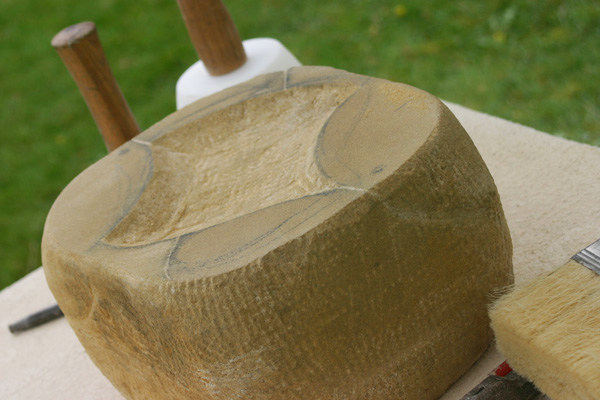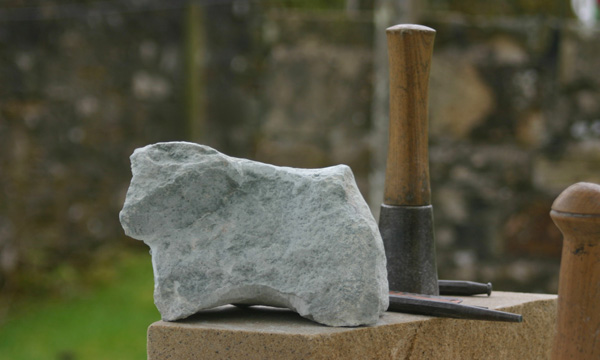Stone Carving Course – April 2014
The two day Spring Stone Carving Course was run in Lastingham, on the edge of the North York Moors, a beautiful and inspiring location.
The course participants worked really hard, particularly on Saturday, when they were ‘roughing out’ their sculptures, ready for the finer detail carving and then finishing on Sunday.
They were all beginner stone carvers – here you can see how they got on
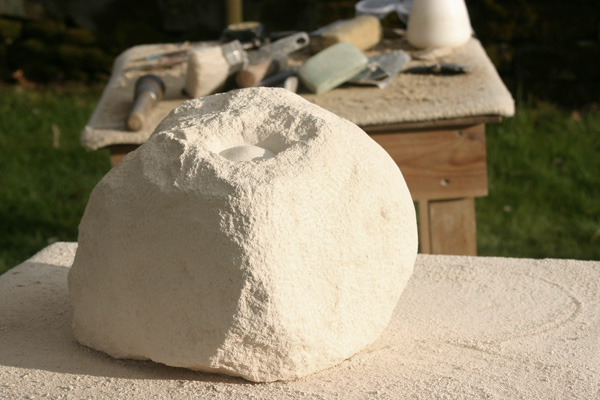
This is an abstract piece in limestone – full of rugged stone texture, contrasting with smooth, round curves and a surprise bubble bursting from within.
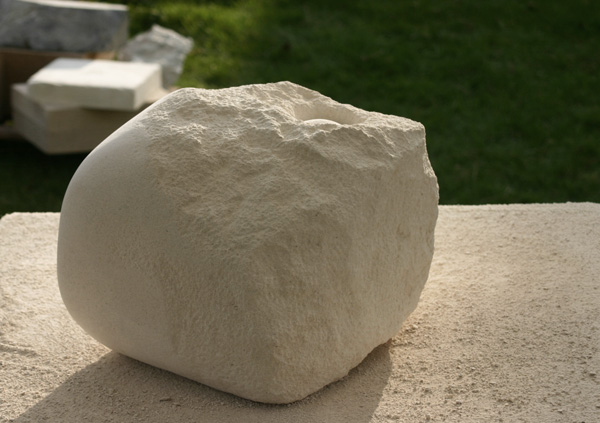
The snail is carved in Tadcaster Limestone, and on the second day changed slightly to become a more simple Ammonite shape.

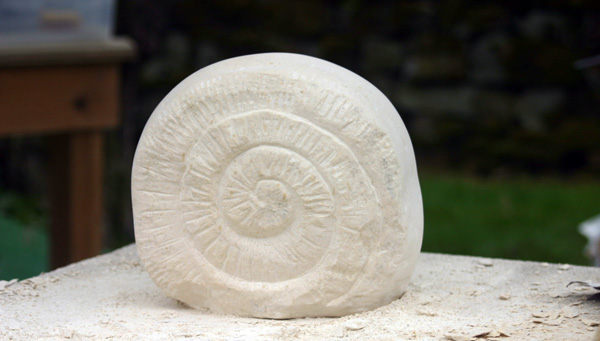

Drawings of this archaic looking (and feeling) figure had been done prior to the course, which were brought along for guidance. The personality and character of the figure grew and strengthened over the two days, which resulted in a very powerful sculpture in local sandstone.


This shell carving was made in Soapstone and very carefully and meticulously worked to get fine detail and beautiful finish. The natural marking and colouring of the stone enhanced the piece which progressed with a strong individual style.

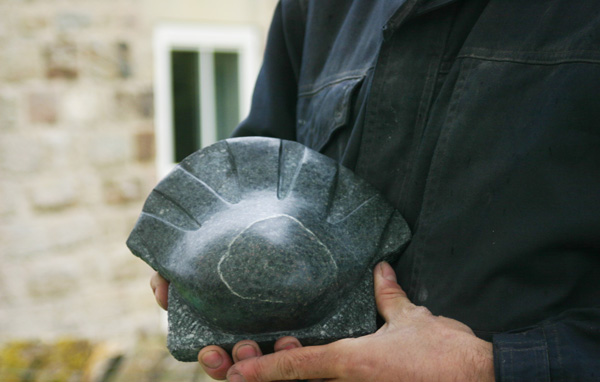
One of the wonderful things about the stone carving course is that each and every person carves something so different. It is a time for learning about the tools and how to use them with confidence to achieve the shapes and results required. It is also a chance to learn about how different stones work and participants have the opportunity, after shaping the stone, of experiencing different textures, finishes and surfaces that can be worked. Sometimes stone needs very little working to convey the carver’s ideas – a way of working which enhances the natural beauty of the particular stone to get the desired effect.
Here relief carving with flowing fish shapes, makes a bowl shape. In the second carving the natural colour and shape of the stone are worked lightly to give the impression of dolphins amongst the waves – and the same stone is left natural on the reverse with only the smallest shaping which leaves us with the strong and powerful outline of an oxen or bull.
